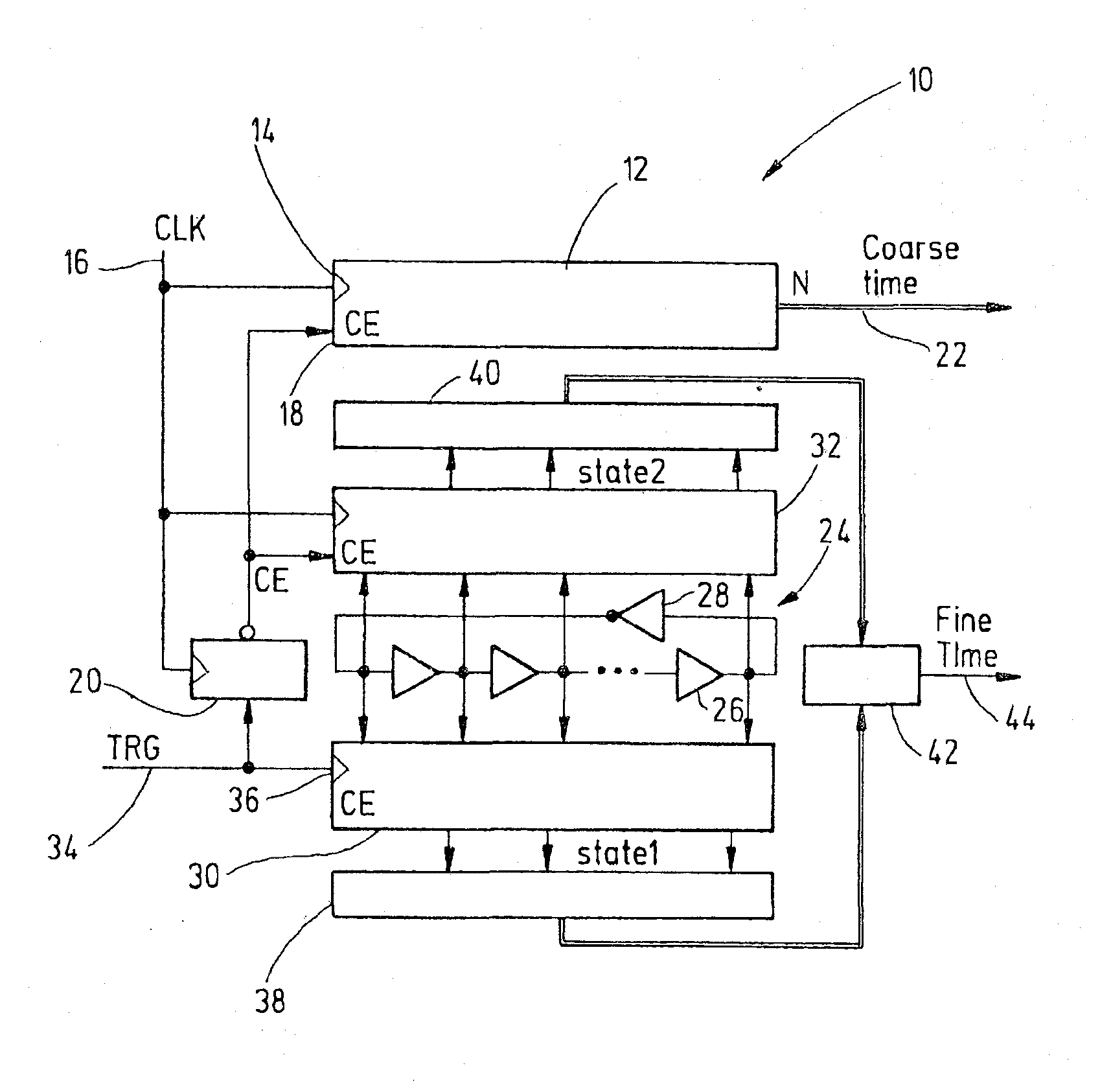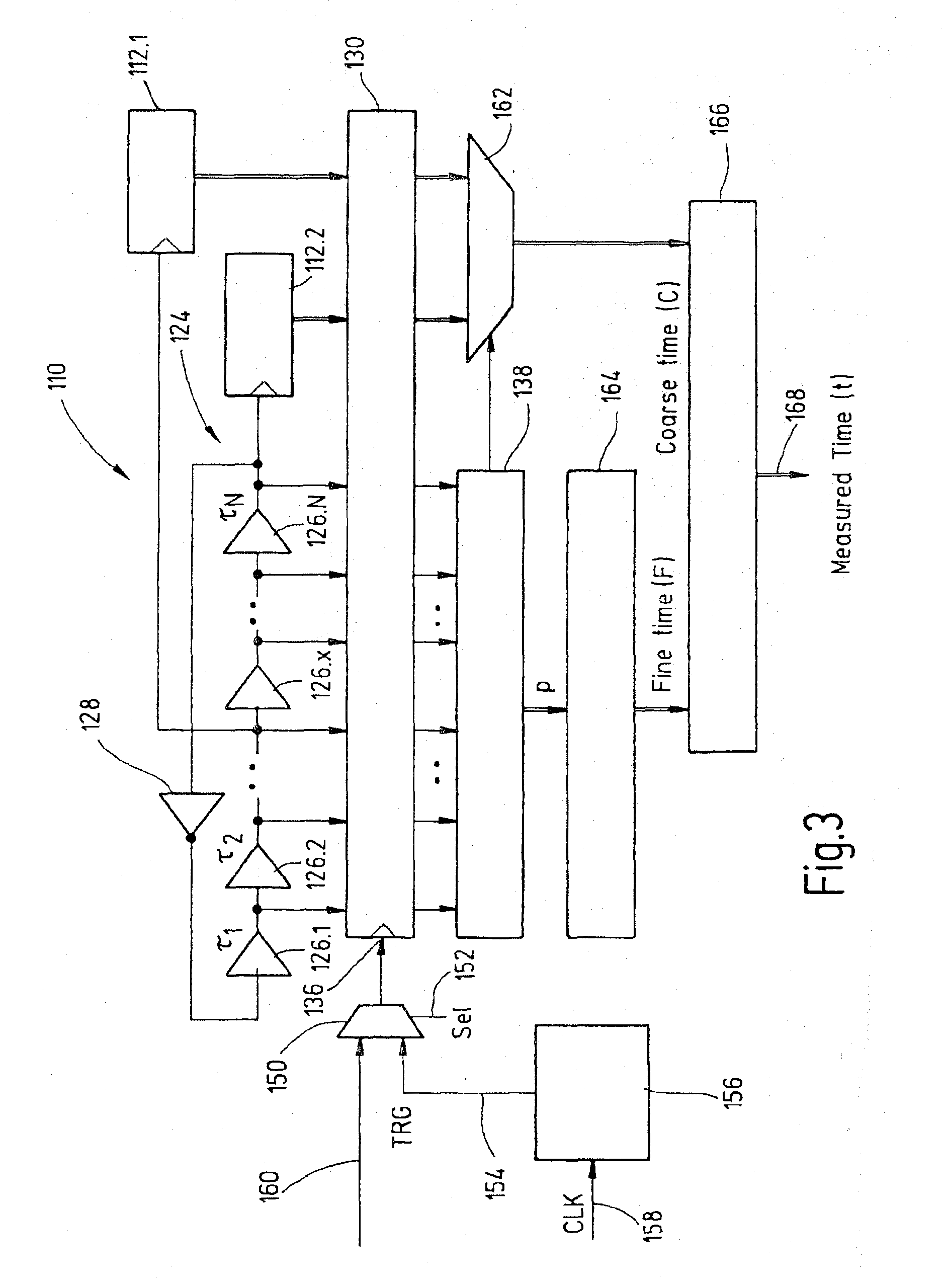Time-to-digital conversion with delay contribution determination of delay elements
a time-to-digital conversion and contribution determination technology, applied in the field of time-to-digital converter and a time-to-digital conversion method, can solve the problems of monotonous relation, non-monotonic relation, definite relation, etc., and achieve the effect of excellent precision and linearity of time-to-digital conversion and short delay tim
- Summary
- Abstract
- Description
- Claims
- Application Information
AI Technical Summary
Benefits of technology
Problems solved by technology
Method used
Image
Examples
Embodiment Construction
[0028]FIG. 1 shows a time-to-digital converter 10 comprising a ring oscillator 24. The time-to-digital conversion is a combination of coarse time conversion and fine time conversion. A coarse time is determined by a coarse time converter unit 12 having a first input 14 connected to a stable reference clock 16 and a second input 18 connected to the output of a D flip-flop 20. The second input 18 represents the COUNT ENABLE (CE) of the coarse counter 12. A count value C is output at the output 22 representing the coarse time to be converted.
[0029]A pulse is circulated in the ring oscillator 24 comprising a plurality of delay elements 26 and an odd number of inverters 28. The output of each delay element 26 and of said inverter 28 is connected to a first fine time register 30 as well as to a second fine time register 32. The state of the ring oscillator 24 is captured in the first fine time register 30 in response to a rising edge of a trigger signal 34 which is connected to the input ...
PUM
 Login to View More
Login to View More Abstract
Description
Claims
Application Information
 Login to View More
Login to View More - R&D
- Intellectual Property
- Life Sciences
- Materials
- Tech Scout
- Unparalleled Data Quality
- Higher Quality Content
- 60% Fewer Hallucinations
Browse by: Latest US Patents, China's latest patents, Technical Efficacy Thesaurus, Application Domain, Technology Topic, Popular Technical Reports.
© 2025 PatSnap. All rights reserved.Legal|Privacy policy|Modern Slavery Act Transparency Statement|Sitemap|About US| Contact US: help@patsnap.com



